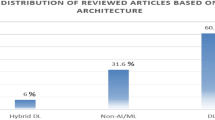Abstract
In this paper, we extend the previous research works on the robust multi-sequences segmentation methods which allows to consider all available information from MRI scans by the composition of T1, T1C, T2 and T2-FLAIR sequences. It is based on the clinical radiology hypothesis and presents an efficient approach to combining and matching 3D methods to search for areas of comprised the GD-enhancing tumor in order to significantly improve the model’s performance of the particular applied numerical problem of brain tumor segmentation.
Proposed in this paper method also demonstrates strong improvement on the segmentation problem. This conclusion was done with respect to Dice and Hausdorff metric, Sensitivity and Specificity compare to identical training/test procedure based only on any single sequence and regardless of the chosen neural network architecture. We achieved on the test set of 0.866, 0.921 and 0.869 for ET, WT, and TC Dice scores.
Obtained results demonstrate significant performance improvement while combining several 3D approaches for considered tasks of brain tumor segmentation. In this work we provide the comparison of various 3D and 2D approaches, pre-processing to self-supervised clean data, post-processing optimization methods and the different backbone architectures.
The reported study was funded by RFBR according to the research project No 19-29-01103.
Access this chapter
Tax calculation will be finalised at checkout
Purchases are for personal use only
Similar content being viewed by others
References
Ge, C., Gu, I.Y., Store Jakola, A., Yang, J.: Cross-modality augmentation of brain MR images using a novel pairwise generative adversarial network for enhanced glioma classification In: 2019 IEEE International Conference on Image Processing (ICIP), pp. 559–563 (2019)
Havaei, M., Guizard, N., Chapados, N., Bengio, Y.: HeMIS: hetero-modal image segmentation. In: Ourselin, S., Joskowicz, L., Sabuncu, M.R., Unal, G., Wells, W. (eds.) MICCAI 2016. LNCS, vol. 9901, pp. 469–477. Springer, Cham (2016). https://doi.org/10.1007/978-3-319-46723-8_54
Varsavsky, T., Eaton-Rosen, Z., Sudre, C.H., Nachev, P., Cardoso, M.J.: PIMMS: permutation invariant multi-modal segmentation, CoRR, vol. abs/1807.06537 (2018). http://arxiv.org/abs/1807.06537
Dorent, R., Joutard, S., Modat, M., Ourselin, S., Vercauteren, T.: Hetero-modal variational encoder-decoder for joint modality completion and segmentation. arXiv:1907.11150 (2019)
Letyagin, A.Y., et al.: Artificial intelligence for imaging diagnostics in neurosurgery. In: 2019 International Multi-Conference on Engineering, Computer and Information Sciences (SIBIRCON), pp. 336–337. IEEE-Inst Electrical Electronics Engineers Inc. (2019)
Groza, V., et al.: Data preprocessing via multi-sequences MRI mixture to improve brain tumor segmentation. In: Rojas, I., Valenzuela, O., Rojas, F., Herrera, L.J., Ortuño, F. (eds.) IWBBIO 2020. LNCS, vol. 12108, pp. 695–704. Springer, Cham (2020). https://doi.org/10.1007/978-3-030-45385-5_62
Letyagin, A., et al.: Multi-class brain tumor segmentation via multi-sequences MRI mixture data preprocessing. In: 2020 Cognitive Sciences, Genomics and Bioinformatics (CSGB), Novosibirsk, Russia, pp. 185-189 (2020). https://doi.org/10.1109/CSGB51356.2020.9214645
Groza, V., et al.: Brain tumor segmentation and associated uncertainty evaluation using multi-sequences MRI mixture data preprocessing. In: Crimi, A., Bakas, S. (eds.) BrainLes 2020. LNCS, vol. 12659, pp. 148–157. Springer, Cham (2021). https://doi.org/10.1007/978-3-030-72087-2_13
Menze, B.H., Jakab, A., Bauer, S., Kalpathy-Cramer, J., Farahani, K., Kirby, J., et al.: The multimodal brain tumor image segmentation benchmark (BraTS). IEEE Trans. Med. Imaging 34(10), 1993–2024 (2015). https://doi.org/10.1109/TMI.2014.2377694
Bakas, S., Akbari, H., Sotiras, A., Bilello, M., Rozycki, M., Kirby, J.S., et al.: Advancing The Cancer Genome Atlas glioma MRI collections with expert segmentation labels and radiomic features. Nat. Sci. Data 4, 170117 (2017). https://doi.org/10.1038/sdata.2017.117
Baid, U., et al.: The RSNA-ASNR-MICCAI BraTS 2021 benchmark on brain tumor segmentation and radiogenomic classification. arXiv preprint arXiv:2107.02314 (2021)
Bakas, S., et al.: Segmentation labels and radiomic features for the pre-operative scans of the TCGA-GBM collection. Can. Imaging Archive (2017). https://doi.org/10.7937/K9/TCIA.2017.KLXWJJ1Q
Bakas, S., et al.: Segmentation labels and radiomic features for the pre-operative scans of the TCGA-LGG collection. Can. Imaging Archive (2017). https://doi.org/10.7937/K9/TCIA.2017.GJQ7R0EF
Chaurasia, A., Culurciello, E.: Linknet: exploiting encoder representations for efficient semantic segmentation. arXiv preprint arXiv:1707.03718 (2017)
Hu, J., Shen, L., Sun, G.: Squeeze-and-Excitation networks. arXiv preprint arXiv:1709.01507 (2017)
Agarap, A.F.: Deep learning using rectified linear units (ReLU). arXiv preprint arXiv:1803.08375 (2018)
Warfield, S.K., Zou, K.H., Wells, W.M.: Simultaneous truth and performance level estimation (staple): an algorithm for the validation of image segmentation. IEEE Trans. Med. Imaging 23(7), 903–921 (2004)
McKinley, R., Meier, R., Wiest, R.: Ensembles of densely-connected CNNs with label-uncertainty for brain tumor segmentation. In: Crimi, A., Bakas, S., Kuijf, H., Keyvan, F., Reyes, M., van Walsum, T. (eds.) BrainLes 2018. LNCS, vol. 11384, pp. 456–465. Springer, Cham (2019). https://doi.org/10.1007/978-3-030-11726-9_40
Kamnitsas, K., et al.: Efficient multi-scale 3D CNN with fully connected CRF for accurate brain lesion segmentation. Med. Image Anal. 36, 61–78 (2017)
Isensee, F., Jaeger, P.F., Kohl, S.A., Petersen, J., Maier-Hein, K.H.: nnU-Net: a self-configuring method for deep learning-based biomedical image segmentation. Nat. Methods 18, 203–211 (2020)
Chen, C., Liu, X., Ding, M., Zheng, J., Li, J.: 3D dilated multi-fiber network for real-time brain tumor segmentation in MRI. In: Shen, D., et al. (eds.) MICCAI 2019. LNCS, vol. 11766, pp. 184–192. Springer, Cham (2019). https://doi.org/10.1007/978-3-030-32248-9_21
Acknowledgment
The reported study was funded by RFBR according to the research project No 19-29-01103.
Author information
Authors and Affiliations
Corresponding author
Editor information
Editors and Affiliations
Rights and permissions
Copyright information
© 2022 The Author(s), under exclusive license to Springer Nature Switzerland AG
About this paper
Cite this paper
Pnev, S. et al. (2022). Brain Tumor Segmentation with Self-supervised Enhance Region Post-processing. In: Crimi, A., Bakas, S. (eds) Brainlesion: Glioma, Multiple Sclerosis, Stroke and Traumatic Brain Injuries. BrainLes 2021. Lecture Notes in Computer Science, vol 12963. Springer, Cham. https://doi.org/10.1007/978-3-031-09002-8_24
Download citation
DOI: https://doi.org/10.1007/978-3-031-09002-8_24
Published:
Publisher Name: Springer, Cham
Print ISBN: 978-3-031-09001-1
Online ISBN: 978-3-031-09002-8
eBook Packages: Computer ScienceComputer Science (R0)





